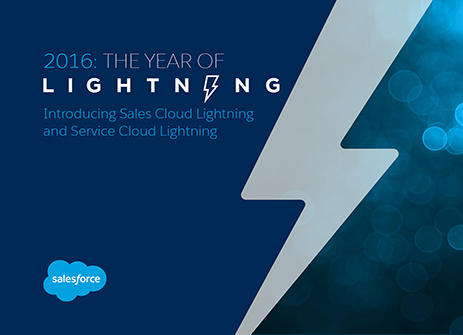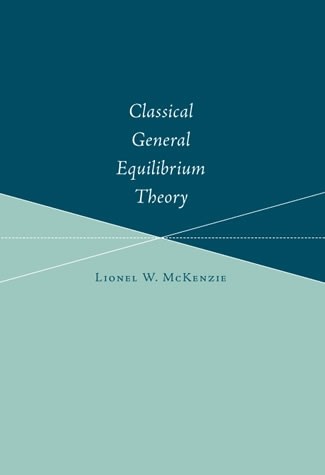Contents:


If an organization’s income statement shows just total income and expenses without separating the restricted dollars, inflated surpluses can appear in year one of the grant period, along with possible artificial deficits in the remaining years of the grant period. This resource article aims to define funds with donor restrictions and funds without donor restrictions , and give nonprofit leaders the tools to record, report, and effectively manage contributed income and net assets. Unrestricted funds often make up the majority of donations for small nonprofits. So you can use this money for any organizational need that aligns with your legally declared mission.
Net assets can be liquid (comprising cash and short-term receivables), or fixed (furniture, fixtures, equipment, inventories, and land & buildings net of long-term debt), or long-term. T/F Under FASB standards the statement of activities for a not-for-profit organization is required to be separated into operating and nonoperating activity. For example, a nonprofit is likely to have a separate general ledger account for each of its bank accounts. It may also have 50 general ledger accounts for each of its major programs, plus many accounts under its fundraising and management and general expense categories. The number of accounts in a nonprofit’s general ledger could range from 30 to 1,000 or more. The number of accounts depends on the number of programs that the nonprofit has, the types of revenues it earns, and the level of detail required for planning and control of the organization.

Using a cloud-based solution specifically designed for the needs of nonprofits can help them improve operations and grow their mission. NetSuite for Nonprofit Organizations is an integrated cloud application that provides real-time financial management for nonprofits. Gain efficiencies with a powerful nonprofit financial management and accounting system, and have visibility into all spending. Use the financial planning tools for budgeting and forecasting to ensure stability while growing and achieving your mission. Powerful e-commerce tools help you make the most of online fundraising.
Barrier Three: Securing Support
The systemic nature of the problem prompted Echoing Green and The Bridgespan Group to team up to research the depth of racial inequities in philanthropic funding. As intermediaries, we work with organizations that are often at distinctly different points in their development, giving us a broad view of the sector. Echoing Green is a nonprofit dedicated to supporting emerging leaders and their early-stage organizations and provides seed funding and leadership development through its annual fellowship program. Bridgespan is a global nonprofit that advises organizations and philanthropists. The troubling inequities we both continue to see in our work reflects the extent to which the sector is suffering.

But background and lived experience inform how any leader works and the solutions they may employ regardless of the issue. Not surprisingly, leaders of color may draw on their cultural background to develop innovative approaches, especially in addressing issues that affect their own community. But what we would call ‘Retained Earnings’ in a for-profit company is called ‘Net Assets’ in a non-profit.
First, some important differences between for profit and non-profit accounting
To learn more about accrual accounting, see “How to Use Accrual Accounting in Your Growing Business”. One of the most critical is the difference between unrestricted net assets and restricted net assets. Through these funds, the organizations can pay off their current expenses as well as look around for other programs or projects that might exist. Notice that the split between net assets with and without donor restrictions has changed.
If the organization has no facilities or skilled staff devoted to crocodiles, it may be forced to spend more than the amount donated in order to fulfill the terms of the bequest. Echoing Green finds emerging leaders with the best ideas for social innovation as early as possible and sets them on a path to lifelong impact. To create true partnerships with grantees it is important to understand the communities your grantees serve and the issues that they are working to solve. This goes beyond site visits and often requires funders to get out of their comfort zone. For some that may mean attending community meetings—not as a funder but as an observer.
Over the past five years 74 percent of US-based Echoing Green Fellows self-identified as a person of color. Leaders of color have inequitable access to social networks that enable connections to the philanthropic community. Such a mirror is necessary because these norms undermine a funder’s best intentions to achieve equity. In our conversations and subsequent research we also identified ways to help break down the barriers. We’ve learned how crucial it is to explicitly acknowledge that we still operate in a system of inequity, making the road ahead difficult to traverse for some of our fellows.
Without Donor Restrictions
Organizations should also consider whether alternate sources of funds could be obtained through a fundraising campaign or a line of credit to improve liquidity. This guide teaches nonprofit organizations about accounting standards, rules and how to handle common issues. Accounting experts share concepts, formulas, sample financial statements and a free getting started guide. Another key difference is the limitations non-profits have in deploying their assets compared to a for-profit company. Most non-profits rely heavily on donations or have strict requirements for how it can use its resources to achieve its stated mission. As a result, within the net assets section of the statement of financial position there are specific accounts that reconcile the varying degrees to which the non-profit can use its money.

State and federal entities can penalize nonprofits that do not follow these regulations and laws. The options for recording transactions include paper ledgers, nonprofit-friendly software or a bookkeeping service. Accountants should be able to record transactions such as in-kind donations using fair market value, whether they are for money, goods or services. They should also be able to create purchase orders for procuring goods and services from businesses. A nonprofit organization is a company whose primary goal is to further a mission, rather than earning revenue to benefit stakeholders. Goals can be charitable, religious, scientific or educational, and many nonprofits are exempt from paying federal taxes.
Understanding the Importance of Unrestricted Net Assets in Nonprofit Organizations
The ‘quickbooks payroll Sheet’ is often called ‘Statement of Financial Position’. The ‘Income Statement’ or ‘P&L’ is called the ‘Statement of Activities’. That said, often the non-profit executives and boards use the common names in conversation. Under the Statement of Activities there is a source of income titled “Net Assets Released from Restrictions.” Basically it is Temporarily Restricted items that were released from Temporarily Restricted to Unrestricted during the year. For example, if someone is well known for making charitable donations in the form of stock, clearly specifying that only the dividends from the stock are to be used for funding by the not-for-profit organization.
Using this two-column approach works for both the income statement and the balance sheet. As shown in the income statement below, new income from a grant with donor restrictions is recorded and displayed in the With Donor Restrictions column. When the time or purpose restriction has been met, a journal entry is made to transfer funds from the With Donor Restrictions column to the Without Donor Restrictions column using the “release from restrictions” line item. The disclosures related to liquidity should particularly assist creditors, donors, and other users in assessing the near-term availability of cash. Under current practice, resources may appear to be available for short-term cash needs, but in fact are not available to the organization because of donor-imposed limitations on their use. This requirement to disclose the not-for-profit’s liquidity management policy could provide the necessary incentive for some organizations to articulate and adopt such policies.
Statement of Activities
For nonprofits looking to maximize their unrestricted net assets, transparency is key. It’s important to communicate financial decisions openly with donors and stakeholders – this builds trust in an organization’s ability to manage its finances responsibly while also ensuring continued support over time. Unrestricted net assets refer to the portion of a nonprofit’s total assets that do not have any donor restrictions or other limitations placed on them.
There are 27 types of nonprofit organizations, and each has specified rules that govern their eligibility, elections, tax-deductible contributions and how they lobby. The net assets of a government should be reported in three categories—invested in capital assets net of related debt, restricted, and unrestricted. Permanent endowments or permanent fund principal amounts included in restricted net assets should be displayed in two additional components—expendable and nonexpendable. MD&A should introduce the basic financial statements and provide an analytical overview of the government’s financial activities. Although it is RSI, governments are required to present MD&A before the basic financial statements.
Applicable to https://1investing.in/ welfare organizations, for exemption under Section 501. Jill Foley, Managing Partner and Founder of Four Leaf Financial & Accounting, PLL, discusses the need for nonprofits to turn a profit. We understand that product offers and rates from third-party sites may change, and while we make every effort to keep our content updated, the figures mentioned on our site may differ from actual numbers.
NRA vulnerable as it seeks financial recovery – The Ohio State University News
NRA vulnerable as it seeks financial recovery.
Posted: Tue, 28 Mar 2023 07:00:00 GMT [source]
Additionally, the higher stakes donors perceive when making big bets can push them to lean on “tried and true” processes and systems that are plagued with bias. Roberts is the CEO of First Nations Development Institute, a 40-year-old organization that works to strengthen economic conditions in Native American communities through direct programming as well as grantmaking to grassroots organizations. First Nations has received a four-star rating from Charity Navigator eight years in a row, a distinction held by only 4 percent of the nonprofits in the nation. Unrestricted net assets are the remaining net Assets (Assets – Liabilities) that are neither temporarily nor permanently restricted. Think of these as the cushion to cover a downturn or a well to fund opportunities. Where it does come in is that more of their capital (called net assets in non-profits) is available as back-up in case something goes wrong.
Equitable Philanthropy Case Study To upend the chronic underinvestment in Black-led organizations, The 1954 Project seeks to radically redesign how philanthropy connects with Black leaders in education. This overview introduces readers to The 1954 Project’s work and how it has invested in Black leaders. This research, from Echoing Green and Bridgespan, lays bare the racial disparity in today’s funding environment and argues that population-level impact cannot happen without funding more leaders of color.
- In cases like these, the non-profit would recognize the donation as permanently restricted contribution revenues on the statement of activities and it would increase permanently restricted net assets on the balance sheet.
- Nonprofit donors want to see their contributions go directly to the programs the organizations support.
- A charitable donation is a gift of cash or property to a nonprofit organization.
- T/F A not-for-profit typically has gross receipts of $4,500 or less each year.
They have donor-imposed restrictions that can be satisfied by the passage of a defined period of time or by performing defined activities . These can be funds from a grant received to operate a specific program or project or individual contributions given with the intent of supporting a particular program or campaign. Nonprofit financial statements are different from those at for-profit businesses, although both report the same items generally. All companies report a balance sheet, income statement and statement of cash flows. In addition, nonprofits report their statement of functional expenses.
